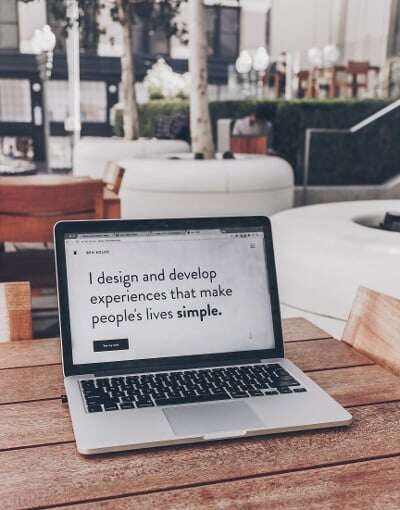Design Thinking: What is its importance in the customer experience?
We face challenges that test our creativity and ingenuity every day, so we must generate ideas to address various challenges. However, only some of...
By Role
By Industry
By Target Customer
What We Offer
We drive business growth by improving operational efficiency through process optimization, smart automation, and cost control. Our approach boosts productivity, reduces expenses, and increases profitability with scalable, sustainable solutions
Customer Experience
We design memorable, customer-centered experiences that drive loyalty, enhance support, and optimize every stage of the journey. From maturity frameworks and experience maps to loyalty programs, service design, and feedback analysis, we help brands deeply connect with users and grow sustainably.
Marketing & Sales
We drive marketing and sales strategies that combine technology, creativity, and analytics to accelerate growth. From value proposition design and AI-driven automation to inbound, ABM, and sales enablement strategies, we help businesses attract, convert, and retain customers effectively and profitably.
Pricing & Revenue
We optimize pricing and revenue through data-driven strategies and integrated planning. From profitability modeling and margin analysis to demand management and sales forecasting, we help maximize financial performance and business competitiveness.
Digital Transformation
We accelerate digital transformation by aligning strategy, processes and technology. From operating model definition and intelligent automation to CRM implementation, artificial intelligence and digital channels, we help organizations adapt, scale and lead in changing and competitive environments.
Operational Efficiency
We enhance operational efficiency through process optimization, intelligent automation, and cost control. From cost reduction strategies and process redesign to RPA and value analysis, we help businesses boost productivity, agility, and sustainable profitability.
Customer Experience
Marketing & Sales
Pricing & Revenue
Digital Transformation
Operational Efficiency
3 min read
Por Sofía Lizano | Jun 02, 2025
3 min read
Por Sofía Lizano | Jun 02, 2025
Did you know that 84% of design projects fail due to a lack of understanding of users' real needs? Design Thinking is a methodology that seeks to change this statistic by focusing on the human being and their needs. This methodology not only fosters creativity and innovation in design but also focuses on effectively solving complex problems.
Table of Contents
What is Design Thinking?
Process and stages
What is it used for?
When can it be used?
How to use it for CX?
What is Design Thinking?
Design Thinking, is a methodology based on finding effective and innovative solutions to complex problems. It also centers on the human being, their needs, backgrounds, and desires. Using this tool allows us to understand those affected, starting from empathy and the creation of ideas that will help design and implement a solution focused on the real problem, benefiting both the company and the customers.
Additionally, this approach promotes experimentation and research for solving challenges and creating prototypes in design while always keeping the users at the center.
Knowing what this methodology is, it's important to remember that this approach is multidisciplinary, so we will need the assistance of different teams and disciplines to have a variety of perspectives.
<< Six Thinking Hats [Design Thinking] >>
Process and Stages
To create a design of this kind and a correct solution, several stages with their corresponding techniques and tools are required. The design thinking process is divided into two spaces: the problem space and the solution space. The first is where the right question is formulated through the stages of empathy and definition. In the second phase, there are three stages: ideation, prototyping, and testing.
1. Empathy: In this initial stage of the process, the foundation of the design is formed. Here, the user is identified, along with their needs and problems (pain points). It's a process of understanding, observing, and listening to their experiences and challenges.
To complete this segment, there are some techniques and tools that can help collect information, such as interviews, the 5 Ws questions, exploring the experience, and observing interactions, among others.
<< Designing with empathy (Design Thinking) >>
2. Define the problem: In this phase, the problem starts to make sense. An analysis is conducted to synthesize and organize the information gathered in the previous stage. Here, the team understands what needs to be done, what the user truly requires, and their pain points, in other words, identifying the root cause of the problem.
The technique that can be used in this process is the creation of a buyer persona. With the information we hear and observe, we build the profile of customers, including their concerns and desires, among other aspects.
3. Ideate: The third stage is the most creative in the process. Here, the team focuses on generating ideas with potential solutions to the problem. In this section, the goal is to generate a multitude of ideas, allowing for the highest number possible and categorizing them by types of ideas.
As we concentrate on ideation, some of the tools used include brainstorming, mind maps, and grouping them by their content. After this, the team can incorporate changes or additional ideas from their colleagues.
4. Create prototypes: Based on the ideas generated in the ideation stage, improvements are selected, and low-fidelity prototypes are created. Additional features are gradually added to these prototypes to present them to the customer and assess whether we are approaching a solution to the initial problem.
Various techniques can be used in this phase, such as storytelling, storyboards, physical and digital models, among others.

What is it used for?
In summary, we can say that Design Thinking serves for:
When can it be used?
Related to the information mentioned earlier, it can be used in situations where it's needed to:

How to use it for CX?
As we have seen, this methodology focuses on the customer. While it is true that the customer's experience is their perception of the company or brand, the use of this method can help us better understand the needs of our users to create a better buyer persona and customer journey.
On one hand, it allows us to understand the customer's concerns and desires, and on the other, we can define the problem based on what we discover in the empathy process. With this, innovative and creative ideas for various solutions can be generated.
In conclusion, the Design Thinking methodology can be applied in various situations where the goal is to understand the complex problems presented by users and solve them creatively with new ideas, ultimately improving the customer's experience.

We face challenges that test our creativity and ingenuity every day, so we must generate ideas to address various challenges. However, only some of...

Nowadays, it has become a necessity to understand what are the objectives and problems faced by customers. Based on this, strategic decisions must be...

Having the right tool to manage customer relationships changes everything. In a world where consumer expectations are constantly evolving and...